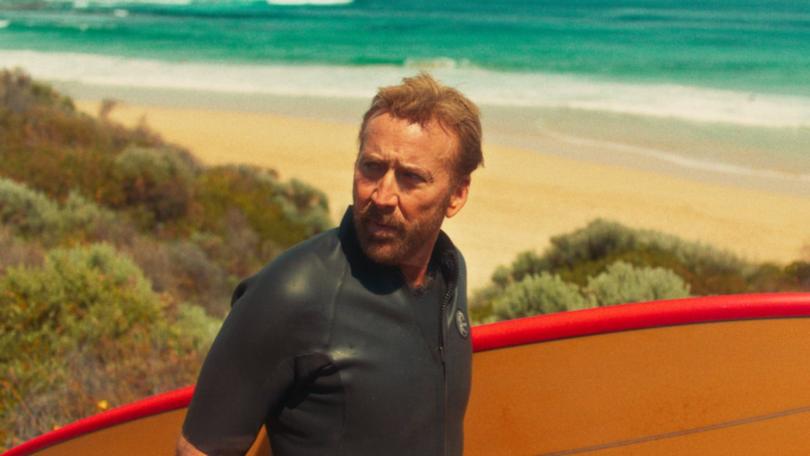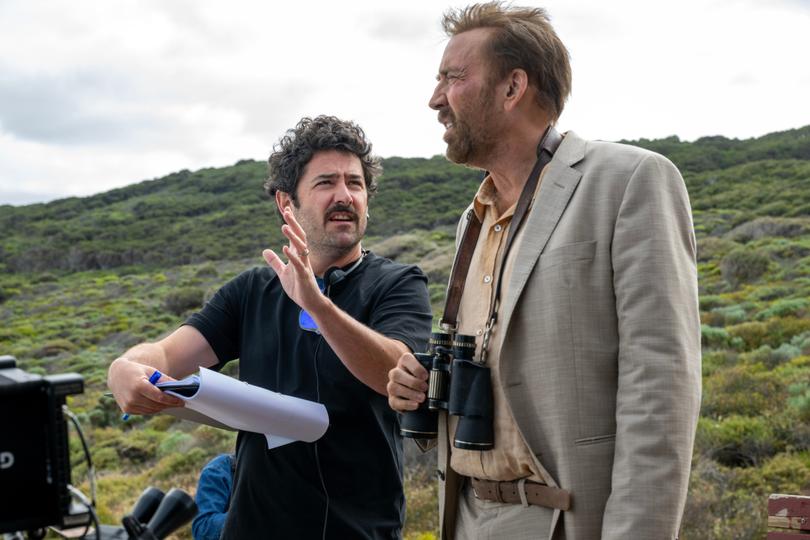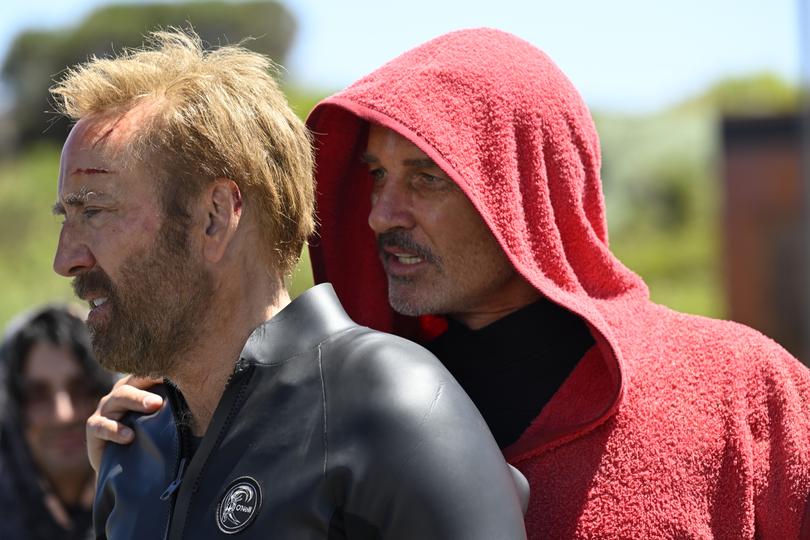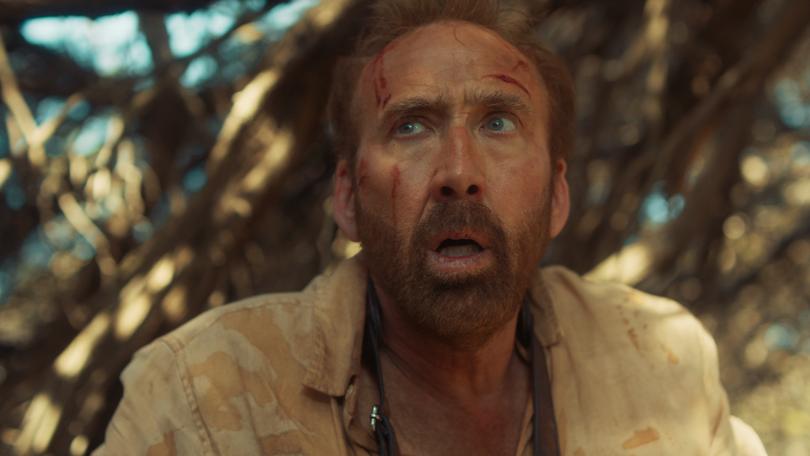Nicolas Cage’s The Surfer: Irish director Lorcan Finnegan’s homage to Australian New Wave and Ozploitation

You don’t get a name more Irish than Lorcan Finnegan, and you don’t get a name more American than Nic Cage.
Yet, these two outsiders from other ends of the world found themselves making a movie in a carpark in Yallingup, a beach town with a population of 1000 people, three hours’ drive south of Perth.
Perhaps it’s that alien perspective that enlivens The Surfer, a strange fever dream of a movie about an unnamed man returning home after a life overseas, denied the chance to surf the breaks he remembered so fondly, quickly deteriorating as he’s tormented by sun, heat and a gang of men that polices who can (locals) and can’t (everyone else) use the public beach.
Sign up to The Nightly's newsletters.
Get the first look at the digital newspaper, curated daily stories and breaking headlines delivered to your inbox.
By continuing you agree to our Terms and Privacy Policy.The Surfer swirls with ideas of mid-life desperation, localism, tribalism and masculinity in a corporate age. Most of its characters are unmistakably Australian, but the core trio behind it are two Irish filmmakers (also screenwriter Thomas Martin) and an American superstar.
Finnegan was familiar with Australia. He watched Home and Away and Neighbours, he has friends who’ve moved here, he’s been to weddings in Australia and has even worked here, once shooting a NIB commercial.

It helps a lot that The Surfer is not social realism, and its distorted lens is that of a foreigner who increasingly becomes an unreliable narrator. It gets weird.
“Nic’s character is an outsider,” Finnegan told The Nightly. “He left as a child and he’s coming back but he hasn’t lived there in maybe 40 years or longer. All of these elements come into play.
“A lot of the characters in the film are almost like parts of Cage’s psyche. Because it wasn’t a realistic drama, we had a bit more free reign.”
There’s a yellow cop car in the film and, as Finnegan, pointed out, there are no banana-hued police vehicles in Western Australia. That was a deliberate choice.
Finnegan met Martin more than a decade ago when they both had short films showing at the Tribeca Film Festival, only to then discover they lived about 50 metres away from each in Dublin. Years later, Martin sent Finnegan a two-page outline of an idea for a movie which both agreed had to be filmed in Australia.
“(Martin) was adapting a novel, working in Sydney and he was on a beach and he saw two guys getting out of their wetsuits and putting on ties and suits, and suddenly they started fighting each other on the beach, really violently beating the sh-t out of each other.”

Martin, Finnegan recalled, had pictured these combatants as a dentist and a lawyer, white collar yuppy men who despite the veneer of civility, had these primal urges they couldn’t suppress – and all over a piece of the beach.
Surf localism is not unique to Australia, nor is the crisis of masculinity. In fact, the character of Scally (Julian McMahon), the leader of the surf gang who preaches a philosophy of alpha maleness, was inspired by international figures such as Joe Rogan and Jordan Peterson, but less extreme.
It wasn’t just that the genesis of The Surfer came from that Sydney punch-up, it was a shared love of Ozploitation and Australian New Wave cinema of the 1970s and 1980s. Finnegan discovered the genre about a decade ago, as he made the move from motion graphics and animation into live action.
Like many admirers of Australian cinema, Peter Weir’s name came up. But also two 1971 classics that were made by foreigners but are widely considered seminal Australian films – Wake in Fright, by Canadian Ted Kotcheff, and Walkabout, by Englishman Nicolas Roeg.
Both films examine a conflict between so-called polite society and Australia’s more elemental nature. The Surfer swims in that same tension.
“I was discussing this with Tom because there’s already a kind tradition of non-Australian filmmakers making very Australian films,” Finnegan said.

The Surfer was set up as an Australian-Irish co-production with Robert Connolly’s outfit, which helped the movie access state and federal funding support. It was filmed primarily in a carpark above a beach, on location and open to the elements.
Despite WA’s famed heat, Finnegan insisted its shoot, during October and November 2023, wasn’t too punishing. If anything, they had to use movie fakery to dial up the temperature, at least on screen.
Cage is covered in glycerin sweat, which attracted the flies, and they used old-school in-camera techniques to create heat distortion, such as flame bars and vintage Panavision lenses. It’s as close to a contemporary take on Ozploitation as you could get.
Cage too feels as if he belongs in this hyper-real world. Finnegan said the character was always there on the page and they didn’t make any tweaks once Cage, who apparently fancied filming in a small Australian town for a couple of months, signed on.

The American actor holds a special position in the cultural zeitgeist, more famed for his heightened performances and exuberant quirks than he is remembered as an Oscar winner.
That comes with certain expectations from audiences. For most of The Surfer, Cage is contained, even understated, at times. There’s a playfulness in how it’s withholding the eventual explosion.
“It was always baked into the story,” Finnegan said. “This escalation of things that get more extreme to the point where he’s eating a raw bird eggs and drinking out of a puddle, and picking up a rat and thinking about biting a chunk out of it like a burrito.
“There’s the point in which he actually snaps for the audience, and that’s their Cage Rage moment, but that was in the story. He plays it so well, but it’s also earnt, and not random. We’ve been on this journey with him.”
The Surfer is in cinemas on May 15

